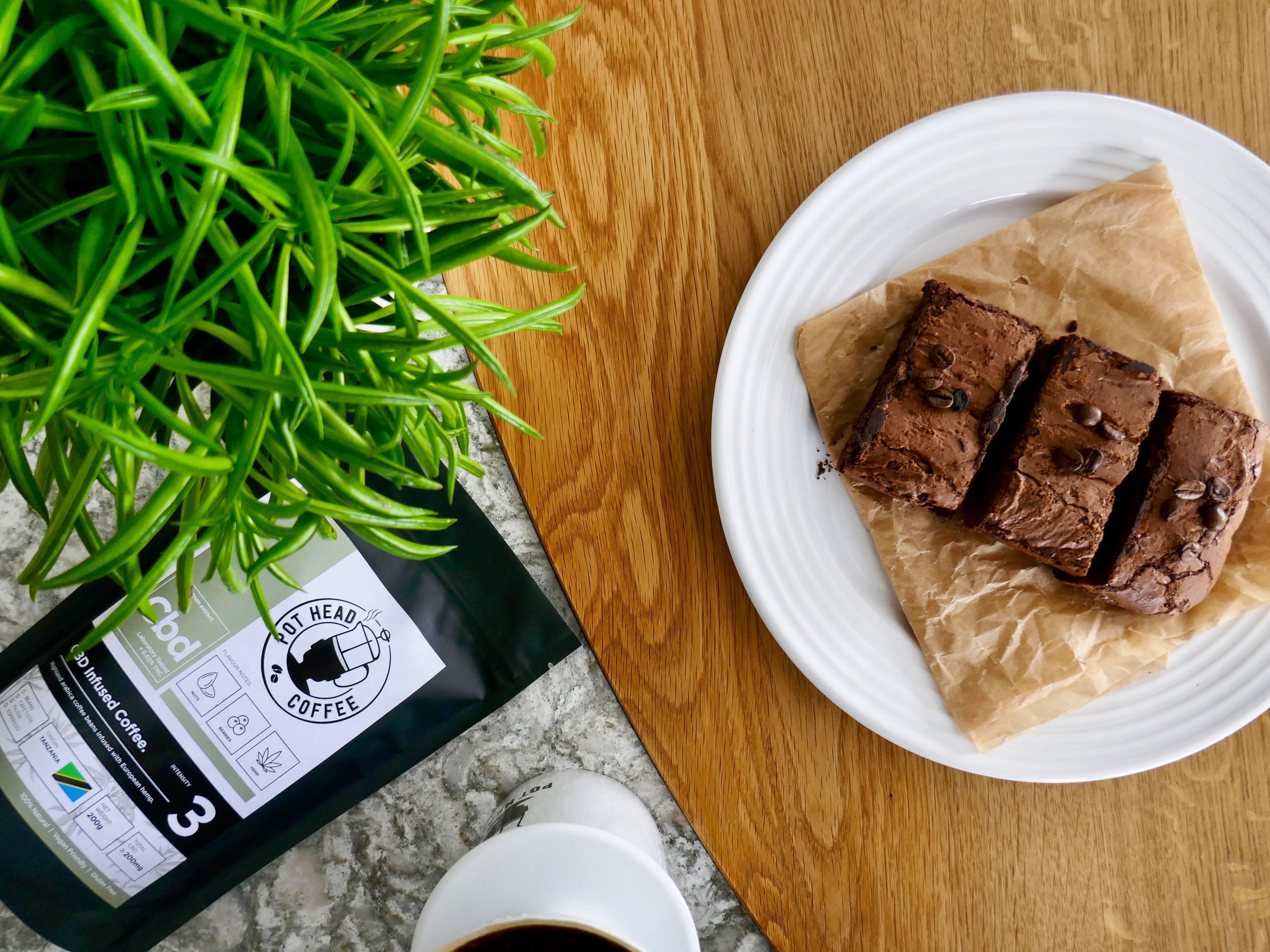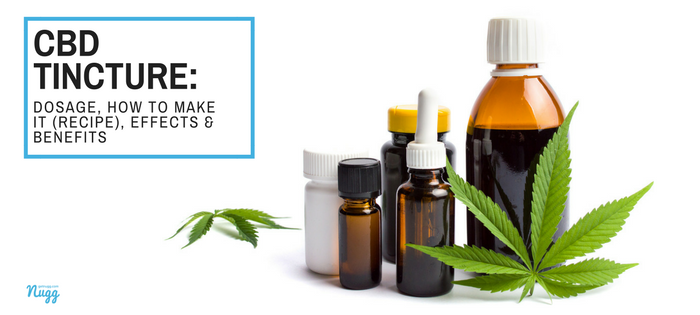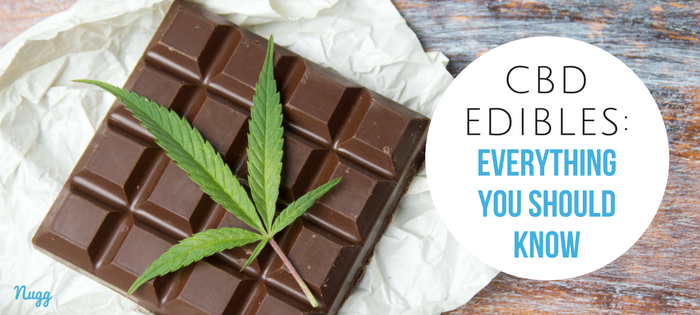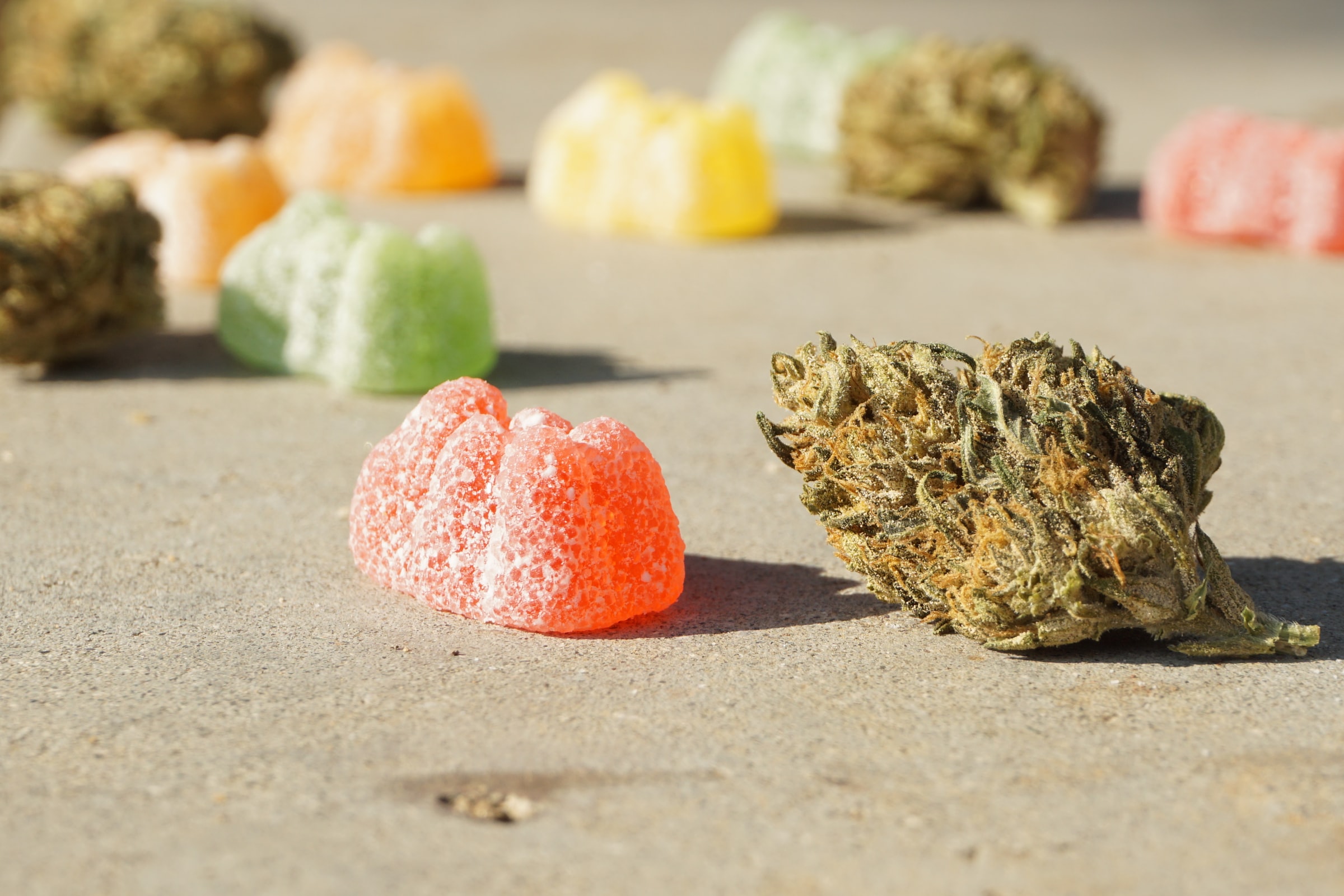In This Article
Edibles are one of the most traditional and beloved ways of consuming cannabis. In recent years, a new form of cannabis product – the tincture – has appeared. And while tinctures often get grouped into the same category as “edibles,” there are a few key differences that can affect your experience as a consumer and medical cannabis patient.
In this article, we compare tinctures vs. edibles. To qualify which is better, we will look at four main areas:
- Health effects
- Cost
- Convenience
- Enjoyment factor
What Are Edibles?
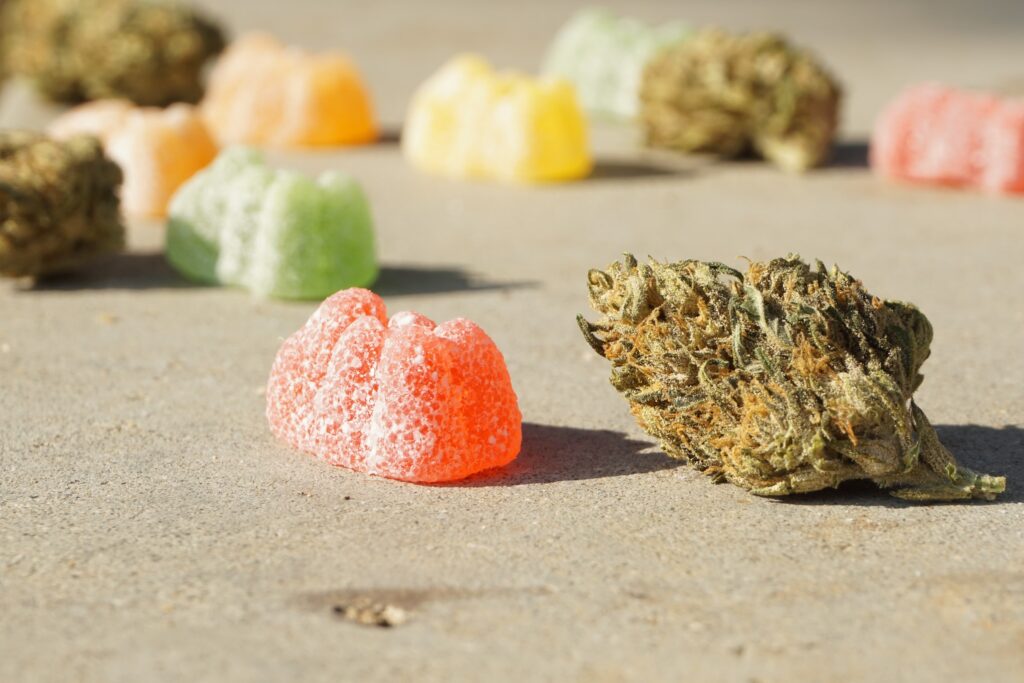
Edibles are a type of food or beverage item infused with one or more cannabis concentrates (like rosin, hash, RSO, or distillate). Edibles are typically dosed in 5-10mg increments of THC or CBD at legal dispensaries.
Edibles can come in classic baked goods like Dr. Norm’s cookies and brownies and traditional chocolate bars and gummies like those from Kiva. As the market has evolved, additional unique infused items like Potli extra virgin olive oil, hot sauce, granolas, hard candies, and beverages have become available.
Edibles can also be easily made at home using infused fats and oils, commonly butter.
Edibles Pros and Cons
Pros
- Precisely dosed. Edibles come in packages of dosed-out pieces making it easy to gauge and consume within your comfort zone. Typical pieces usually contain 5-10mg of THC and/or CBD per piece.
- Assortment of types and flavors. There are many fun edible flavors and styles, like Chewee’s classic Caramels, Oasis’ Peanut Butter Cup Minis, and Punch’s Cookies n’ Cream chocolate bar. Some options even have CBD and other cannabinoids (like CBN or CBG) blended in.
- Less intimidating. For most novice users, edibles are the least daunting way to introduce themselves to the intoxicating effects of cannabis. Compared to smoking or vaping, it’s a little more introduction-friendly.
- Intense effects. When cannabis is smoked, it enters the bloodstream through the lungs and is delivered to the brain within minutes. Because edibles are processed through the stomach and liver, they metabolize into 11-hydroxy-THC, translating into a more intense experience. For users with a higher tolerance, edibles can help achieve their desired results.
- Easily accessible. In most legal medical cannabis states, some form of edibles are available. Whereas some states with MMJ programs restrict smoking and/or vaping.
- Duration. The effects of an edible can last anywhere from 6-12 hours, but some experts report that residual effects can last up to 12 to 24 hours.
- Reasonable prices. Because of their accessibility, effectiveness, and the ease with which they’re manufactured, edibles are usually available at affordable price points. Single-dose edibles can be as little as a dollar, but a standard package of 100mg often ranges from $15-25.
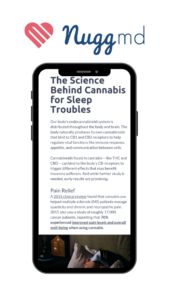
Fall asleep faster and wake up feeling more rested with our comprehensive (and completely free) patient’s guide to medical cannabis for sleep troubles.
Cons
- Intense effects. Because they can take up to 2 hours to take effect, some users end up consuming more than they need, resulting in more pronounced effects than desired. There are some microdose edibles available, but the variety can be limited.
- Duration. With 4 to 6 hours of lasting effects (or more) and residual effects of up to 24 hours, some users may find edibles to be too much of a commitment.
- Premeasured dosage. Sometimes, users need just 2.5mg, and splitting a 10mg edible yourself can make it hard to get the precise dosage you need. Alternatively, higher tolerance users may need 100mg or more to feel anything — this can get expensive when most states cap milligram dosage per package to around 100 mg.
- Onset time. Edibles can take anywhere from 30 minutes to 2 hours to take effect. The unpredictability can be difficult for some consumers, who may take an extra dose too early (or need faster relief than an edible can provide).
- Less predictable in their effects. Some people don’t experience any intoxicating effects when they take edibles. This experience is fairly common but often isn’t realized until after many failed attempts. And because many edibles aren’t produced using a single strain – or don’t list the strain used – medical patients may struggle to find a product that delivers the precise effects desired.
- Dietary Issues. The edibles menu can be challenging to navigate if users have nutritional issues. While there are a growing number of gluten-free, vegan, and non-dairy options, they remain less common than high-sugar options like chocolates, gummies, and baked goods.
Check out our comparison guide, Edibles vs. Smoking, to see how edibles stack up to smoking.
What are Cannabis Tinctures?
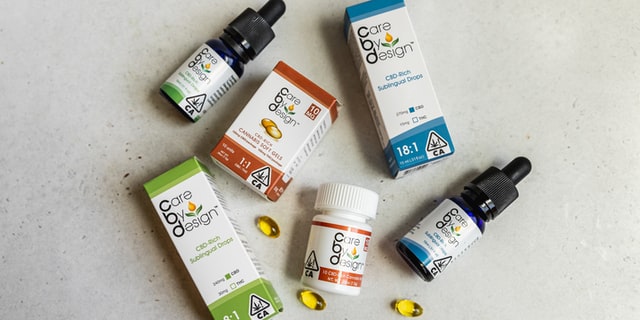
Tinctures are alcohol or oil-based liquids that can be infused with cannabis. They are technically considered cannabis concentrates, though many consumers approach tinctures like they would edibles.
Tinctures have been used throughout history as medical and herbal remedies. The first western documentation of cannabis tinctures was in a medical journal in 1843. Tinctures are commonly consumed sublingually, left under the tongue to absorb into the mucus membranes for 10-15 seconds. Consumers can also use tinctures by infusing them into food or beverages or applying them topically for various skin conditions.
There are a few different categories of tinctures. Full-spectrum, or whole plant, contains all types of cannabinoids and terpenes found in a given cultivar (THC, CBD, CBG, CBN, myrcene, caryophyllene, etc.). Broad-spectrum is similar to full-spectrum, but without the THC. And, less common since they don’t utilize the entourage effect, isolates include only a single cannabinoid, like THC or CBD.
While many tinctures use MCT oil like olive or coconut, others utilize alcohol (a process that can be duplicated at home using alcohol or glycerin as a solvent).
Cannabis Tincture Pros and Cons
Pros
- Exact dosages. A measured dropper is often distributed with tinctures, allowing users to get precise doses.
- Basic ingredients. Most tinctures, unless flavored, are just a mix of MCT oil & cannabis.
- Variety of ratios, more cannabinoids. Tinctures can come as pure THC, pure CBD, or a ratio of cannabinoids (anywhere from 1:1 to 30:1 and above), allowing consumers to tailor their experience.
- Products last longer. Tinctures can come in bottles containing up to 1,000mg of THC, CBD, and other cannabinoids. So depending on the desired dosage, tinctures can last much longer than the standard 100mg edibles available at the local dispensary.
- Faster onset time. Because many users consume tinctures by placing the liquid under their tongue, the belief is that tinctures absorb more quickly into the mucus membranes. The effects of sublingual products like tinctures are commonly claimed to be felt within 15 to 30 minutes. However, we recommend waiting the full 2 hours between doses to ensure each dose has plenty of time to take full effect. Applied topically, tinctures have no intoxicating effects.
- Duration. Like edibles, tincture effects can last for 6 to 8 hours.
- Higher concentrations. Tinctures can be up to 1,000mg per container, which is desirable if users have higher tolerances or want their product to last longer.
Cons
- Pricey. Because of their higher THC content, tinctures can run a bit higher in price. Some can run over $100 per bottle.
- Flavor. Most tinctures, unless flavored, have a very earthy taste that may not appeal to all consumers.
- Duration. 6-8 hours of effects can be too long for some users to commit to.

Fall asleep faster and wake up feeling more rested with our comprehensive (and completely free) patient’s guide to medical cannabis for sleep troubles.
Tincture vs. Edible: Which is Healthier?
Tinctures tend to contain fewer ingredients than edibles, which can be loaded with sugar and potential allergens. Many tinctures are also full-spectrum and boast a higher concentration of cannabinoids, which is better for achieving the entourage effect and delivering the full desired effects.
Tinctures vs. Edibles: Cost Comparison
Edibles can range from as cheap as $5 to up to $100 for higher-end options. The average price for a 100mg package is about $15. Meanwhile, tinctures typically range from $30 to $200. However, it’s worth noting that many tinctures possess 2-5 times as many cannabinoids as edibles, justifying the price for many consumers.
Effects for both edibles and tinctures last an average of about 6 to 8 hours. Edibles have a shelf life of about 3-6 months and can go up to 1 year, and tinctures have a shelf life of up to 10 years.
Many consumers will go through 100mg of edibles faster than 1,000mg of tinctures, giving tinctures the edge on price despite the higher price point for a single product. But if a consumer has a positive experience with edibles, they can provide a more flavorful and potent experience for a reasonable price.
Tincture vs. Edibles: Which is More Convenient?
Edibles are more readily available for purchase, but both tinctures and edibles are fast and simple to use. Both are easy to store or travel with (remember not to carry cannabis products across state lines).
And consumers can easily make edibles or tinctures at home.
Tincture vs. Edibles: Enjoyment Factor
Edibles provide a more potent high because of how they metabolize in our body. Flavors of edibles are also considered superior to tinctures, with a wide range of fruit flavors and chocolate variations. Unless you can find flavored options, tinctures can be less pleasing to the tongue.
When consumed sublingually, the effects of tinctures can reportedly be felt 2-8 times faster than those of an edible. However, this hasn’t been sufficiently proven, and consumers should wait a full 2 hours between doses to avoid consuming too much.
So while you can’t go wrong with either edibles or tinctures, edibles offer a more flavorful experience for discerning consumers.
Summary: Tincture vs. Edibles
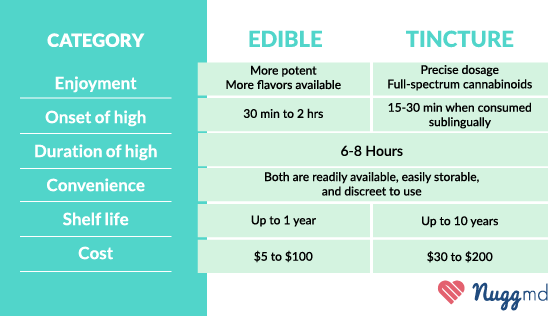
The information in this article and any included images or charts are for educational purposes only. This information is neither a substitute for, nor does it replace, professional legal advice or medical advice, diagnosis, or treatment. If you have any concerns or questions about laws, regulations, or your health, you should always consult with an attorney, physician or other licensed professional.

